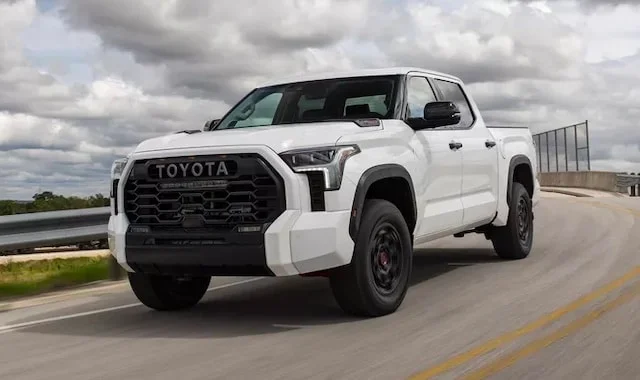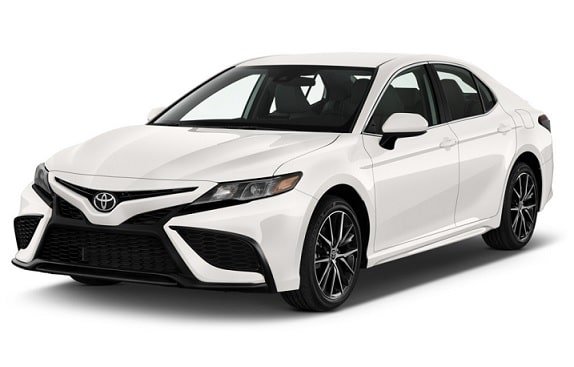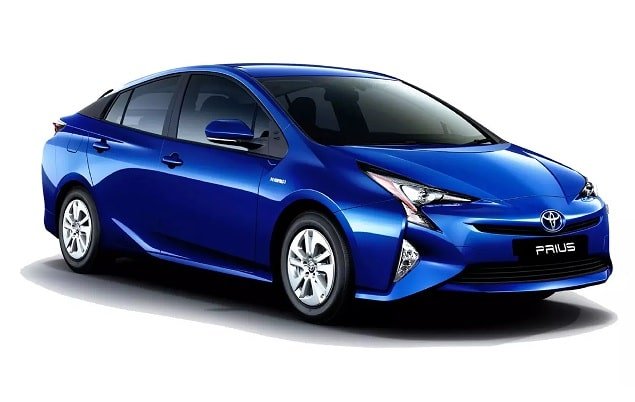Toyota vehicle’s air conditioning systems depend on components such as hoses and fittings that help in regulating and pressuring the refrigerant. When all the systems check, cold air comes out of the car’s vent when the AC is on.
Irrespective of the size of your car, a prior understanding of the above component will go a long way in assisting you to determine the refrigerant capacity of your Toyota.
This guide is designed to expose you to the various refrigerant capacities available for major Toyota cars and how to refill your refrigerant.

How To Know When Your Refrigerant Is Adequately Pressured
1. Pressure Specifications
Some Toyota’s air conditioning recharge systems come with high and low-pressure gauges. These gauges help you detect when your car’s refrigerant level is adequately pressured. A low-pressure gauge is usually indicated with a psi between 25 and 40. A high-pressure gauge, on the other hand, can be anywhere between 225 and 250 psi.
You should turn off the recharge kit valve once the pressure gets to the lower gauge of regular pressurization levels. If you don’t and you overfill the refrigerant in your air-conditioning system, leaks will ensue.
2. Temperature Test
Another way to know when to stop refilling your refrigerant is via the use of a thermometer. Place this thermometer on the air conditioning vents to determine the coolness of the air being released by your car’s AC.
Most times, a reading between 40 to 50°F indicates that the refrigerant is equally pressurized. Please note that during a recharge process, your car’s engine and the air conditioner must be up and running until the process is a success.
What Is The Right Quantity Of Refrigerant For A Recharge?
Toyota cars come in different sizes. The bigger your car, the greater the quantity of refrigerant it can contain. Most midsize Toyota, especially the ones made since 2000 can contain about 28 to 30 oz. of refrigerant.
On the other hand, larger vehicles and Toyotas with rear air conditioning controls can hold more refrigerant. Please note that your AC can only be low on refrigerant, not empty. Hence, to avoid leakages, you don’t recharge your container to full capacity.
Toyota Refrigerant Capacity Chart
Here is a chart of Toyota’s major models and the quantity of refrigerant they can contain:
| Model | Year Of Manufacture | Freon | Filling Quantities |
| Toyota 4Runner LHD | 1993-96 | R134a | 700-800 |
| Toyota 4Runner RHD | 1993-96 | R134a | 650-750 |
| Toyota Auris | 2007-12 | R134a | 450 |
| Toyota Auris Hybrid | 2010 > | R134a | 475 |
| Toyota Avensis (T22) | 1998-03 | R134a | 410-470 |
| Toyota Avensis (T25) | 2003-09 | R134a | 410-470 |
| Toyota Avensis (T27) | 2009 > | R134a | 440 |
| Toyota Avensis Verso | 2001-06 | R134a | 470-530 |
| Toyota Avensis Verso with air-conditioning (AC) at the rear | 2001-06 | R134a | 770-830 |
| Toyota Aygo | 2005 > | R134a | 500 |
| Toyota Camry | 1994-96 | R134a | 850 |
| Toyota Camry (V20) | 1996-01 | R134a | 750-850 |
| Toyota Camry (V30) | 2001.11-05 | R134a | 520-580 |
| Toyota Carina E | 1992-98 | R134a | 700-800 |
| Toyota Celica (T20) | 1994-99.11 | R134a | 600-700 |
| Toyota Celica (ZZT23) | 1999-06 | R134a | 400-460 |
| Toyota Corolla | 1994-97 | R134a | 650-750 |
| Toyota Corolla | 1997-00 | R134a | 600-700 |
| Toyota Corolla | 2008 > | R134a | 440 |
| Toyota Corolla (E12U) | 2002-08 | R134a | 425-475 |
| Toyota Corolla 1,9D – manufactured in Great Britain | 2000-02 | R134a | 450-490 |
| Toyota 1,9D – manufactured in Japan | 2000-02 | R134a | 600-700 |
| Toyota GT 86 | 2012.03 > | R134a | 390 |
| Toyota GT 86 | 2012.03 > | R134ayf | 350 |
| Toyota Hi-Lux | 2005.08 > | R134a | 450 |
| Toyota Hi-Lux | 1993-96 | R134a | 700-800 |
| Toyota Hi-Lux | 1997-05 | R134a | 500-600 |
| Toyota iQ | 2008 > | R134a | 370 |
| Toyota Landcruiser (J12) | 2004.07 > | R134a | 600 |
| Toyota Landcruiser (J12) | 2003-04.07 | R134a | 620-680 |
| Toyota Landcruiser (J12) with AC at the rear | 2004.07> | R134a | 750 |
| Toyota Landcruiser (J12) with AC at the rear | 2003-04.07 | R134a | 770-830 |
| Toyota Landcruiser (J12) with AC at the rear + with coolbox | 2004.07 > | R134a | 850 |
| Toyota Landcruiser (J12) with AC at the rear + with coolbox | 2003-04.07 | R134a | 870-930 |
| Toyota Landcruiser (J12) with coolbox | 2004.07 > | R134a | 700 |
| Toyota Landcruiser (J12) with coolbox | 2003-04.07 | R134a | 720-780 |
| Toyota Landcruiser (J15) | 2009 > | R134a | 550 |
| Toyota Landcruiser (J15) with AC at the rear | 2009 > | R134a | 770 |
| Toyota Landcruiser (J15) with AC at the rear + with coolbox | 2009 > | R134a | 800 |
| Toyota Landcruiser (J15) with coolbox | 2009 > | R134a | 600 |
| Toyota Landcruiser (J20) condenser with 16 mm depth with AC at the rear, without cooler box | 2008 > | R134a | 920 |
| Toyota Landcruiser (J20) condenser with 16 mm depth with AC at the rear, with cooler box | 2008 > | R134a | 970 |
| Toyota Landcruiser (J20) condenser with 16 mm depth with AC at the rear, with/without cooler box | 2008 > | R134a | 770 |
| Toyota Landcruiser (J20) condenser with 22 mm depth with AC at the rear, without cooler box | 2008 > | R134a | 960 |
| Toyota Landcruiser (J20) condenser with 22 mm depth with AC at the rear, with cooler box | 2008 > | R134a | 1010 |
| Toyota Landcruiser (J20) condenser with 22 mm depth with AC at the rear, with/without cooler box | 2008 > | R134a | 870 |
| Toyota Landcruiser 3.0 Turbo D | 1993-96 | R134a | 850-900 |
| Toyota Landcruiser 3.0 Turbo D with AC at the rear | 1993-96 | R134a | 1550-1650 |
| Toyota Landcruiser 3.4 | 1996-03 | R134a | 650-750 |
| Toyota Landcruiser 3.4 with AC at the rear | 1996-03 | R134a | 900-1000 |
| Toyota Landcruiser 4.5 | 1995-98 | R134a | 750 |
| Toyota Landcruiser Amazon 4.2 Turbo D | 1995-98 | R134a | 800-900 |
| Toyota Landcruiser Amazon 4.7/4.2 Turbo D | 1998-00 | R134a | 750 |
| Toyota Landcruiser Colorado/Prado | 1997-99 | R134a | 650-750 |
| Toyota Landcruiser Colorado/Prado with AC at the rear | 1997-99 | R134a | 900-1000 |
| Toyota MR2 (W2) | 1993.11-00 | R134a | 800-900 |
| Toyota MR2 (W3) | 2000-06 | R134a | 470-530 |
| Toyota Paseo | 1996-99 | R134a | 550-650 |
| Toyota Picnic | 1996-00 | R134a | 700-800 |
| Toyota Previa | 2000.08-06 | R134a | 670-730 |
| Toyota Previa | 1993.08-06 | R134a | 850-950 |
| Toyota Previa with AC at the rear | 2000.08-06 | R134a | 850-910 |
| Toyota Previa with AC at the rear | 1993.08-06 | R134a | 1100-1200 |
| Toyota Prius | 2004-09 | R134a | 420-480 |
| Toyota Prius (NHW11) | 1999-04 | R134a | 450-550 |
| Toyota Prius + (ZVW4) | 2011.05 > | R134a | 470 |
| Toyota Prius + (ZVW4) | 2011.05 > | R134ayf | 470 |
| Toyota Prius 1,8HSD | 2009 > | R134a | 470 |
| Toyota RAV4 III (ACA/ACE) | 2006-12 | R134a | 400-460 |
| Toyota RAV4 | 1994-00 | R134a | 650-750 |
| Toyota RAV4 (XA2) | 2000.06-06 | R134a | 480-540 |
| Toyota Starlet | 1994-96 | R134a | 650 |
| Toyota Starlet | 1996-99 | R134a | 550-650 |
| Toyota Supra | 1993-97 | R134a | 650-750 |
| Toyota Urban Cruiser | 2009 > | R134a | 370 |
| Toyota Verso | 2009-12 | R134a | 440 |
| Toyota Verso S | 2011 > | R134a | 360 |
| Toyota Yaris (P13) | 2011 > | R134a | 360 |
| Toyota Yaris 1,0i/1,3i/1,4D | 2006 > | R134a | 370 |
| Toyota Yaris 1,1i/1,3i/1,5i | 1999-02 | R134a | 400-600 |
| Toyota Yaris 1,1i/1,3i/1,5i | 2002-06 | R134a | 380-440 |
| Toyota Yaris 1,4D | 2002-06 | R134a | 410-470 |
| Toyota Yaris Hybrid | 2011 > | R134a | 435 |
How To Fix Toyota Compressor Issues
If the compressor in your car is not adequately pressurized, it may refuse to turn on. This means your car’s engine and AC may be on but you will not feel the presence of the refrigerant. One way to restore this issue is to bypass the air conditioning pressure switch and locate the single wire connector.
This wire is usually on the compressor’s front side and connects to a jump wire. You need to connect this jump wire to the car’s positive battery terminal to turn on the compressor. Before going on this DIY journey, ensure you have a recharge kit in place to compensate for lost refrigerant or lubricant.
Basic Protocols For Refilling Your Toyota
When recharging your refrigerant or carrying out any mechanical work on its circuit, make sure you observe these basic protocols:
All activities must be done under protective clothing, goggles, and gloves. Liquid refrigerant, under normal atmospheric temperature, evaporates almost immediately and any form of physical contact will likely freeze the tissue involved.
Mistakes happen. In the event of direct physical contact, rinse the affected spot thoroughly with enough cold water. Please do not rub the affected area and seek immediate medical attention.
The workplace for refrigerant-related tasks must be well ventilated. Inhaling too much of the refrigerant may lead to dizziness and suffocation (worst case). Hence, do not work on the circuit from a position of exposure. The gaseous refrigerant is heavier than air and easily accumulates.
Smoking is prohibited during any refrigerant process. The refrigerant becomes poisonous when it comes in contact with cigarette ash.
Refrigerant and fire or hot metal are not a good combination as well. Both give rise to poisonous gases.
Whenever there is an overfill and leaks appear, ensure these leaks don’t get into the atmosphere. Ensure the refrigerant reservoir is closed at all times to avoid high-pressure escape which can be lethal under high temperatures.
Do not for any reason expose any section of your Car’s AC to heat. The closest form of heat to the AC system is paintwork but this can be done below a temperature of 75°C to avoid draining the system beforehand.
In the case of a service tube removal, make sure its connections are not pointed in your body’s direction. This is because residues may leak and we both know the implication of physical contact.
When cleaning your vehicle, do not direct the steam jet towards any component of the AC system.
Lastly, you are not allowed to tamper with the factory setting of the screw on the expansion valve.
Conclusion
Most auto engineers do not follow the designated parameters for every AC. This usually results in different problems arising within the refrigerant system.
Now that you know a thing or two about refrigerants, you should be able to reduce when an auto expert is making the right call for your car or not.







